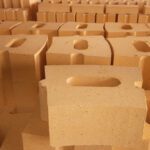Masonry as an art and science
Masonry is an ancient craft that has been used to construct residences, castles, temples, and other structures throughout history. It is a beautiful art form that combines science, imagination, and expertise to construct structures that can endure for centuries.
Types of Masonry:
- Brick Masonry: Brick masonry is one of the earliest and most widespread types of masonry. It is used to construct chimneys, walls, and other structures. Bricks, which are typically composed of fired clay, are set in courses or layers, and secured with mortar. Brick masonry requires bricks, mortar, a trowel, a mallet, and a chisel to construct.
- Stone Masonry: Stone masonry is like brick masonry but is used to construct structures that are heavier and more substantial. Stones, which are typically extracted from quarries, are carved, and shaped to achieve the desired form. For stone masonry construction, one requires stones, mortar, a drill, a saw, a mallet, and a chisel.
- Concrete Masonry: Concrete masonry is a relatively modern building technique used to construct walls, foundations, and floor slabs. Typically, it is a mixture of Portland cement, sand, and water that is deposited into Molds. For concrete masonry construction, one requires concrete, mortar, a trowel, a float, and a chisel.
- Stucco Masonry: Stucco masonry is an exterior treatment that gives a building a decorative appearance. Typical components include Portland cement, lime, grit, and water. To construct stucco masonry, stucco, mortar, a trowel, a brush, and a raptor are required.
Techniques and Best Practices:
Masonry is both an art and a science, requiring meticulous contemplation of techniques and best practices. Following is a summary of the numerous techniques and best practices for achieving success with masonry projects.
- Safety measures: They are the first and most essential step in any masonry endeavour. Ensure you have the proper safety apparatus, including safety glasses, gloves, and a dust mask, before beginning. Additionally, you should familiarize yourself with the instruments you will be using and their safety precautions.
- Layout and Measurement Techniques: Accurate layout and measurement are essential for successful masonry projects. Start by measuring the area to be worked on and drawing a chalk line around it. Use a level to ensure that the bricks and mortar are at the appropriate height and angle.
- Mixing and Application Methods: When combining and applying mortar, it is essential to use the correct type and mix it to the correct consistency. When applying mortar, you must also use the appropriate trowel size, thickness, and angle.
- Techniques of Finishing: The finishing of masonry projects is an essential phase. To ensure a successful finish, it is necessary to remove superfluous mortar and then brush the masonry and joints to the desired finish using the proper equipment.
These are only a few techniques and best practices for achieving success with masonry undertakings. Mastering masonry requires a great deal of skill and knowledge, so it is essential to take the time to acquire the necessary tools, materials, and techniques. With the proper knowledge and experience, you can create masonry projects that are both attractive and durable.
Disclaimer: This content is provided solely for your review. Erusu Consultants takes no liability for this article. The reader is advised to form their own opinion. Please consult a Structural Engineer before making any final decisions.






